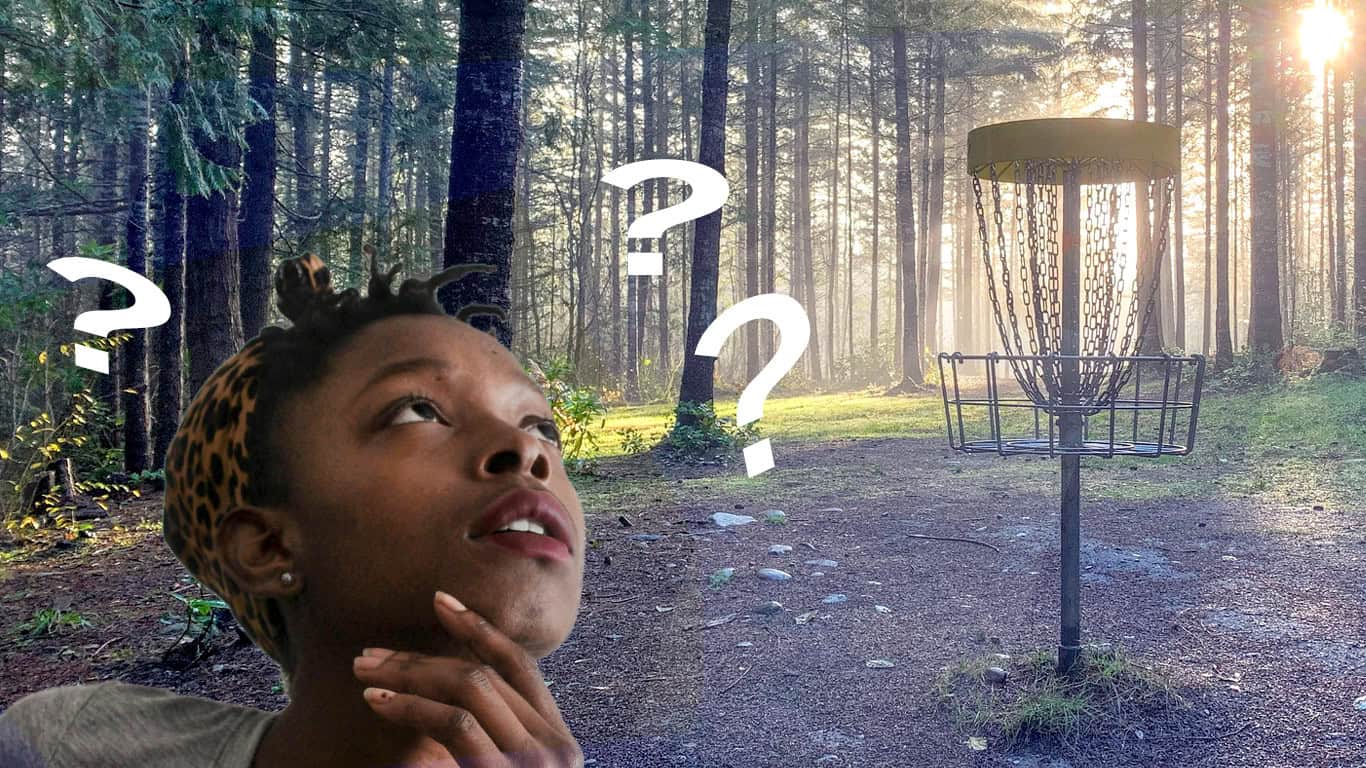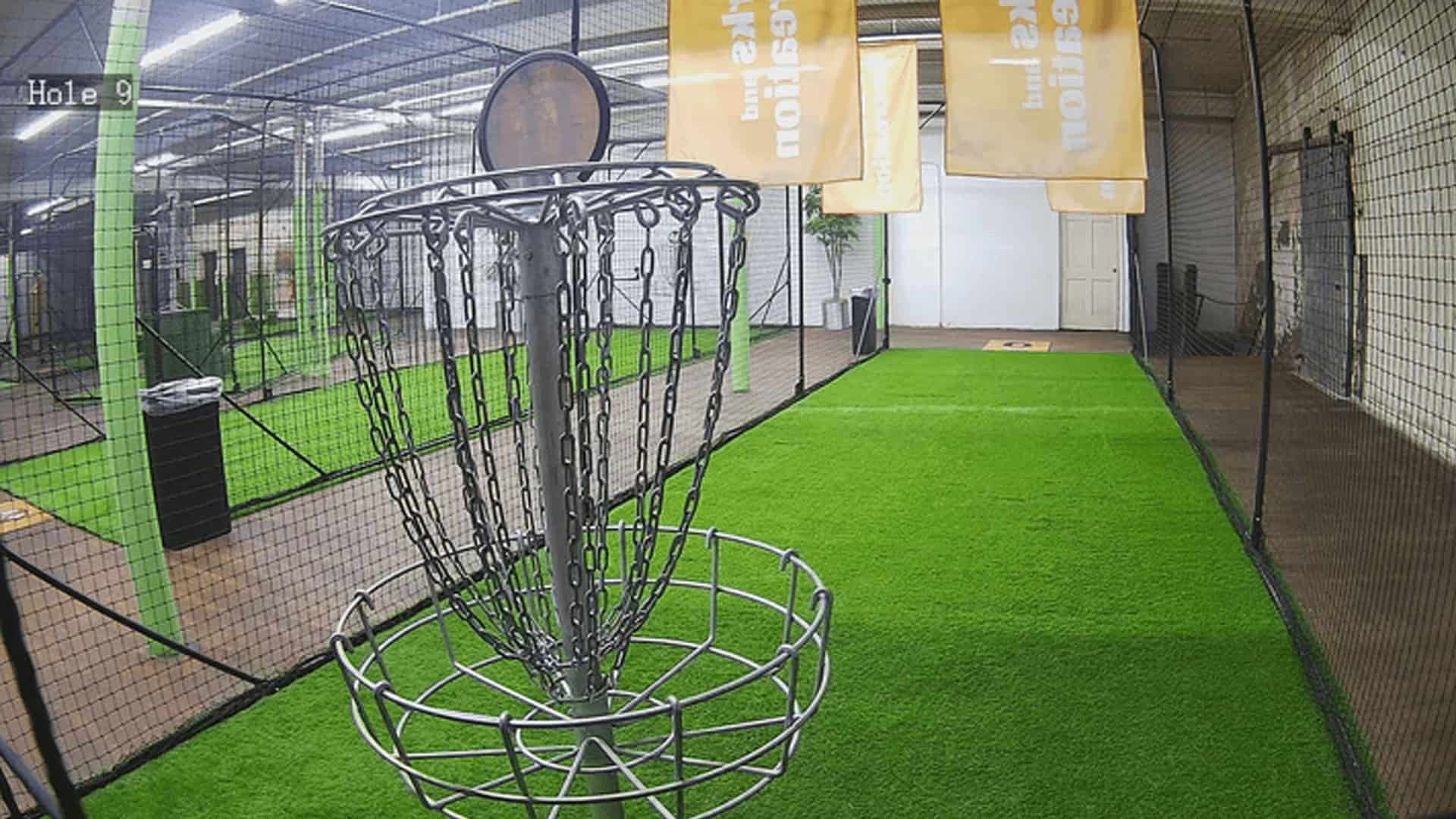Disc golf has similar rules and challenges to traditional golf, but players throw discs instead of hitting balls.
You might have previously encountered the term disc golf, which piqued your interest. But you don’t know where to start and are overwhelmed by the information available.
Don’t worry—we’ve got you covered! We have curated the information you need to know in an easy-to-digest form, starting with the basics.
Brief History of Disc Golf
If you find disc golf reminds you of frisbee, you would not be at fault, as its history has been connected in many ways, more than one. The inventor of disc golf, Ed Headrick, was the one who modernized the frisbee disc that we know today.

Ed worked at the famous American toy company Wham-O in the past. When his tenure there ended, his continued fascination with disc games led him to create different disc specifications and a new patented set of rules and systems.
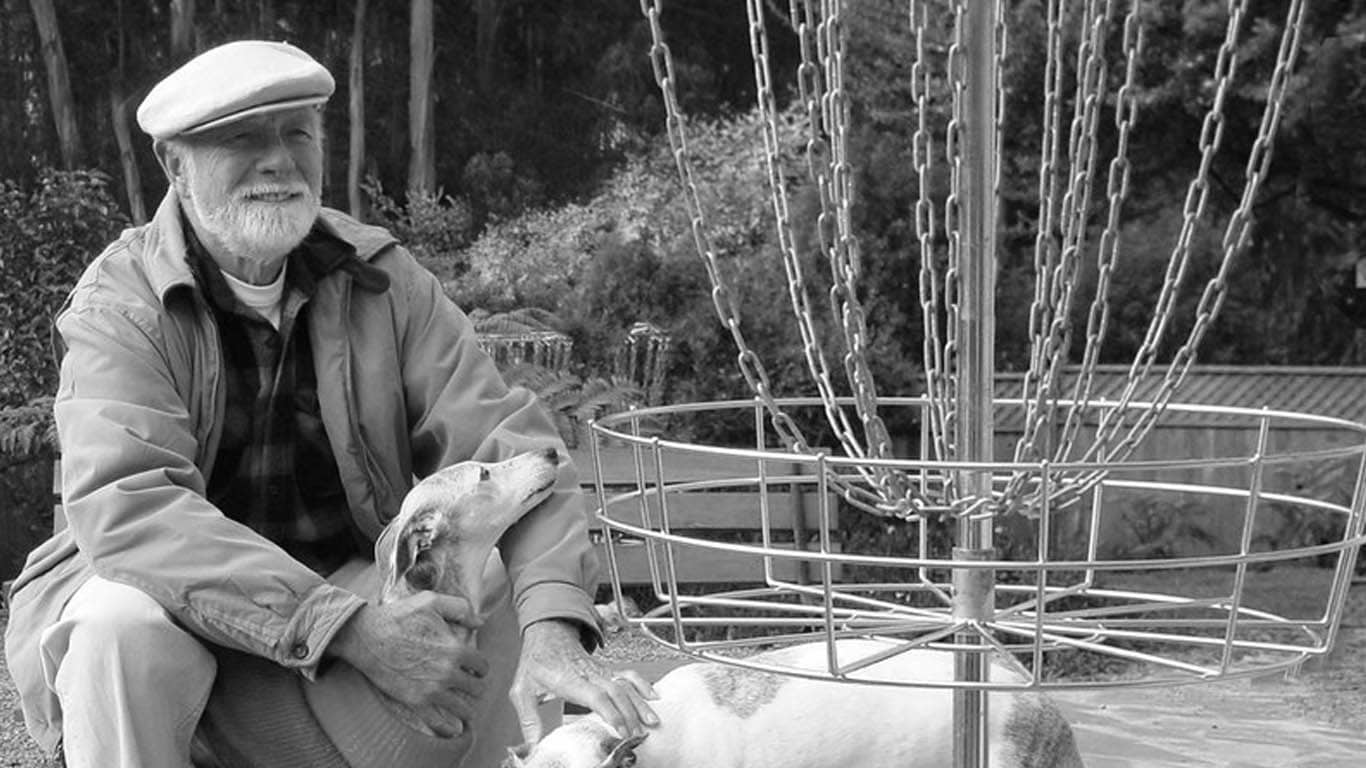
After inventing the disc target, which consists of a pole with a basket with chains to catch thrown discs, he began formalizing the sport through the Disc Golf Association (DGA), which he also founded.
The Goal of a Disc Golf Game
In disc golf, three main elements make the game so appealing & fun: the target, the disc, and the throw.
Played primarily on public disc golf courses, the combination of natural and designed landscapes provides exciting challenges and obstacles when throwing into each target (also called pole holes).
The player who can complete all targets with the fewest throws wins.
Components of a Disc Golf Game
To help you get up to speed with disc golf, the following few paragraphs will briefly discuss the discs, the throw, the course, and how to play a round of disc golf.
The Disc Requirement
To play disc golf, the first thing you need is a disc. When talking about flying discs, the first thing you probably think of is frisbee.
However, discs used for disc golf are different from other types of discs on the market. They are usually smaller and built explicitly for long-range flight.
Discs for disc golf are made of durable plastic and cost anywhere between $10 and $25, making it a relatively affordable sport to play.
Now, the great thing about disc golf is how flexible it is. You only need one disc to play with when you’re just starting out.
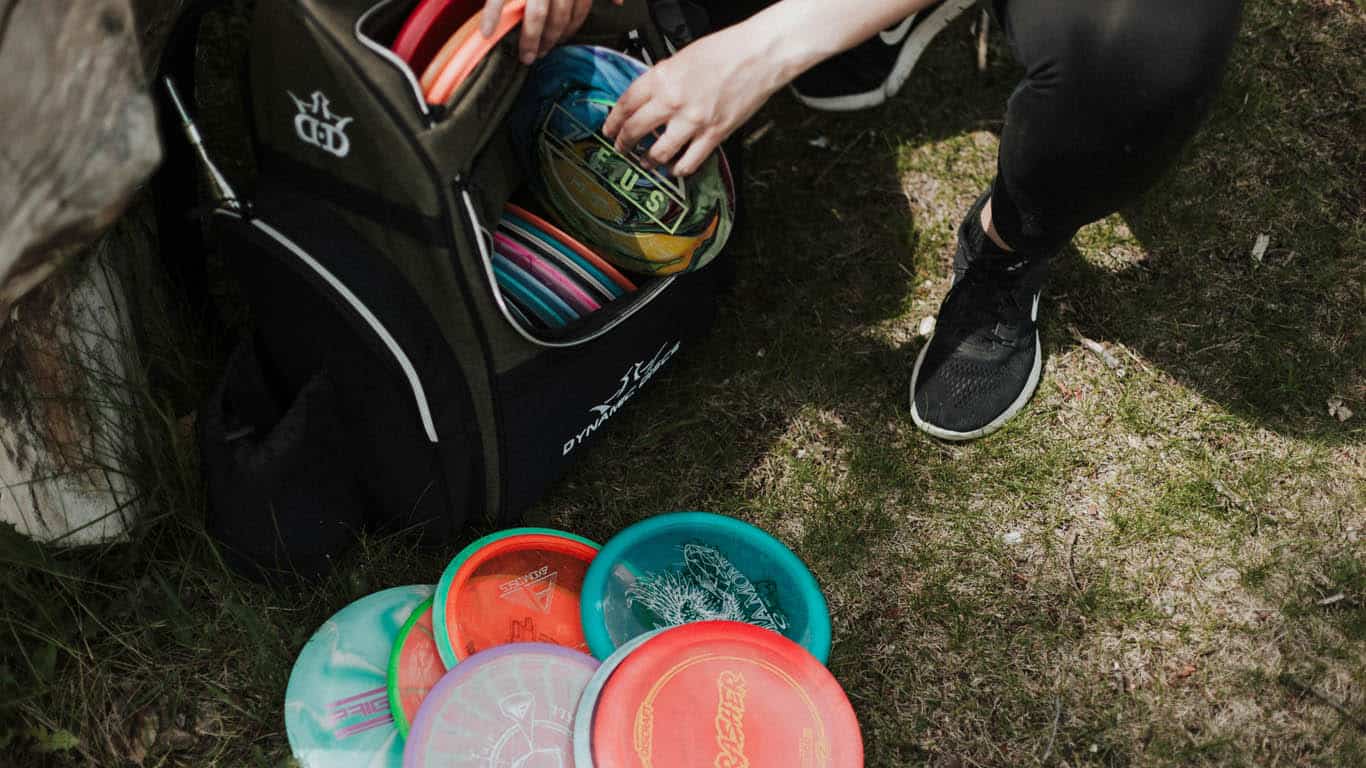
In general, there are four types of discs:
- Putters & Approach,
- Mid-Range,
- Fairway Drivers, and
- Distance Drivers.
Each of the above types serves a different purpose, so you should get one that meets your needs.
Initially, it is recommended to start with a light, mid-range disc since it is often easier to use and could serve multiple purposes.
Once you become more comfortable with the game, you can try out more discs and experiment with different types to see what you like best.
The Most Common Throw
The throwing technique might look deceptively simple, but to throw accurately over hundreds of feet away against the winds and environment requires a certain amount of throw discipline, which you will eventually gain as you play & practice more over time.
If you’re just starting, the most common technique is the backhand throw, whether you are primarily dominant in the right or left hand. (note: there are many more throw techniques out there, but here we’ll just introduce briefly about the backhand throw).
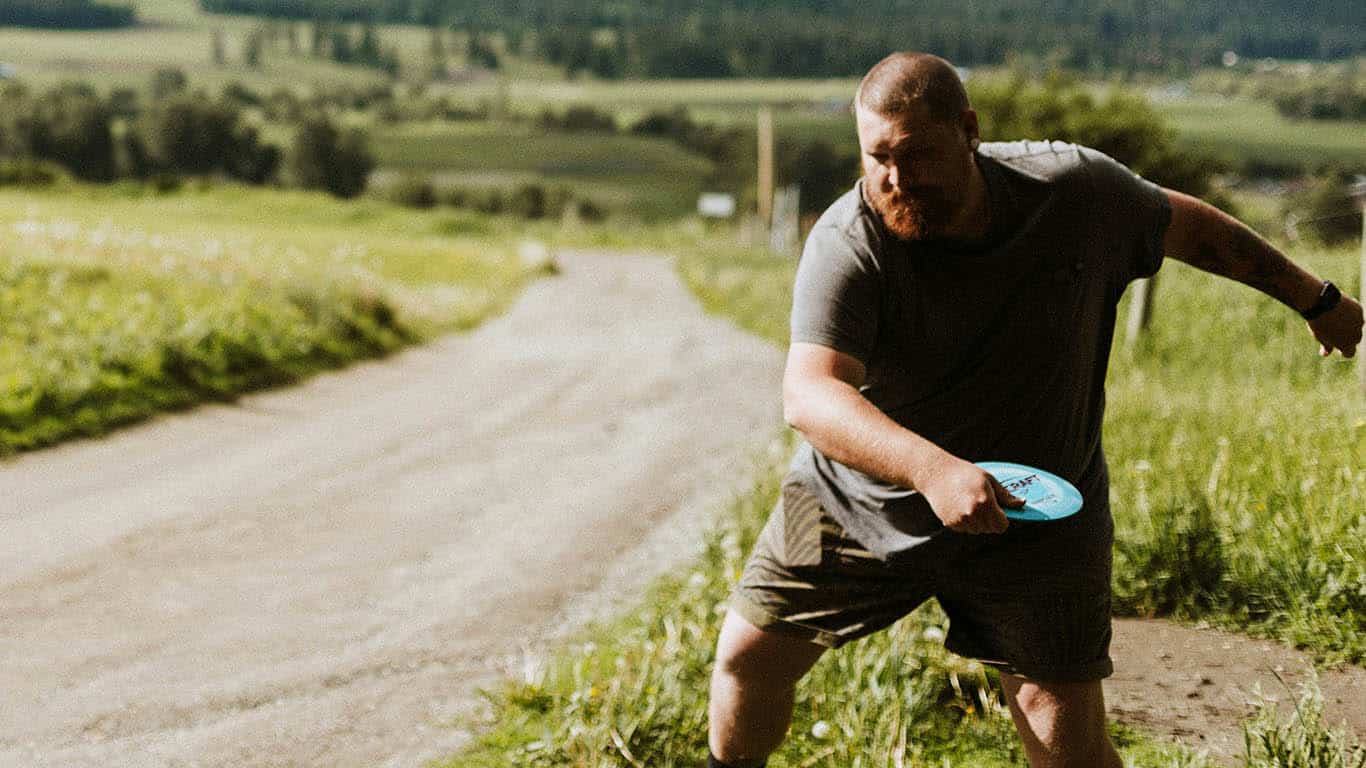
How to Backhand Throw
To throw a backhand, position your feet shoulder-width apart, one in front of the other, as shown in the picture above.
Grip the disc firmly, and reach back with your whole upper body moving as one unit with your hips locked.
Ensure that your head is slightly looking away from the target in front of you, allowing your shoulder to rotate and your arm to pull straight backward optimally.
You may or may not want a run-up before the release point, but always plant your foot first. This means the weight shifts from the back leg to the planting foot as you rotate your body forward, unlock the hips and release the disc from your hand.
Bonus tip: have a relaxed, focused, and content mind while playing. You’re out there to have fun. If you want to grow, don’t overanalyze your throw, but play and practice more while focusing on one area that you want to improve.
The Disc Golf Courses
You can play disc golf wherever there are disc golf poles for targets. Most disc golf courses are set in vast open spaces such as public parks or designated paid courses.
Playing in a wide open area helps minimize accidents or unwanted da mage that might happen if you play on unregulated grounds (always mind passersby and vehicles).
Thankfully, due to the popularity of disc golf in recent years, more disc golf courses are opening up worldwide. Depending on where you live, you should be able to find one near you.
For beginners, it’s best to find a short course with nine holes that are perfect for everyone, including children.
How to Play Disc Golf
Remember, the goal of a disc golf game is to make the fewest number of throws starting from the tee area until the disc rests inside the basket.
If you’re playing by yourself, just go through the course from the first hole to the next until completion. In the same course, several layouts with different starting holes and consequent paths may be available to provide a more challenging route suitable for a higher skill level.
If you’re playing with others, determine who’ll be the first to tee off by a coin toss. The score from the previous hole will determine the tee-off order for subsequent holes—the player with the lowest score tees off first.
When making your throw, you will throw from a starting tee area and subsequently from a marked lie. A marked lie is the place where your disc rests in the ground. You can use the thrown disc lying on the ground as a lie marker from where you start your next throw or place a mini marker directly in front of the disc (and touching the disc) towards the basket.
If you don’t have a marker, you may not flip the thrown disc to make it a lie marker; just leave it to rest on the ground as is and make your next throw from behind it. You are not allowed to pick up the thrown disc before you put down your marker, either.
Usually, disc golf players use mini discs (sold separately) as a lie marker, but you can also use other everyday items. Know that there are official rules defining what can become a mini marker. And, although enforcing such rules is required only for sanctioned play, it is a good habit to get into, just in case you decide to become a pro disc golfer. 😉
Conclusion
You should now understand the basics of disc golf and how to play it. But of course, we are only scratching the surface here. You can discover so much more about disc golf.
If you’re interested and want more information about disc golf, check out our other posts. It won’t be long until you become an avid disc golf fan.
